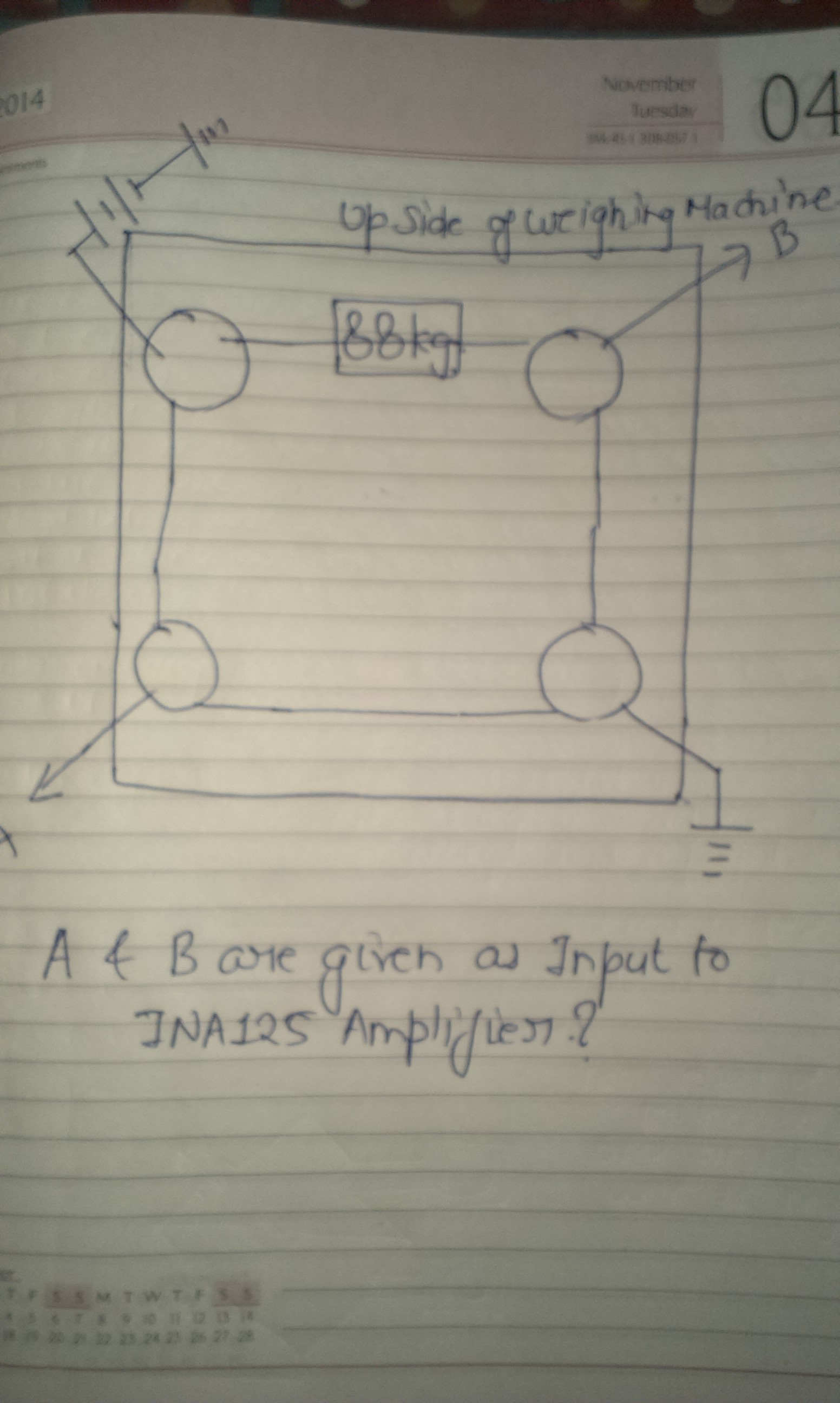I am trying to hack a personal weighing scale.I had taken help of this tutorial but the language used in this is not very easy to understand due to the non-standard naming used for load sensor wires, but its a good tutorial. I had also looked at this tutorial to have a good understanding of adding a strain gauge in whetstone bridge in order to measure small change in resistance.
Also the amplifier used in the tutorial is not easily available in India i.e. INA125.
My question is , is there any alternative for the amplifier INA125.
Also i had read certain other tutorials for adding load sensor to the INA125 , but wasn't able to figure out exactly how to do it?
When i looked at this tutorial, i find that load sensor has to be added in place of resistors in Wheatstone bridge, but every load sensor has 3 wires, now which 2 wires has to be added in Wheatstone bridge,in order to make a full bridge circuit like this
 .
I had even looked at a similar question but didn't get the answer.
.
I had even looked at a similar question but didn't get the answer.
I am enclosing images of the load sensor and weighing machine which i am using.My main aim is to read the load sensor readings with Arduino for a different project.


I had came up with a possible interface of the 4 load sensors to INA125 amplifier, can some body verify this?Below is the image.
 In this A and B will be connected to the pin no 6 and 7 i.e. VIn + and VIn -
In this A and B will be connected to the pin no 6 and 7 i.e. VIn + and VIn -



